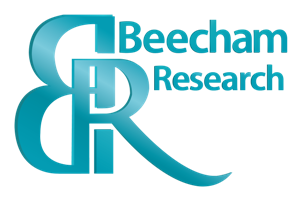Help is at hand for the Internet of Healthcare

The Internet of Healthcare conference, held in London in September 2016 and organised by Vinelake, aimed to look towards the future of healthcare, and how the Internet of Things technology could optimise the transition towards it.
The conference considered what the industry should be doing now in order to realise the potential of IoT for its future.
The conference reflected the multiplicity of speaker backgrounds and issues. Speakers ranged from clinicians from the UK and overseas, hospital administrators, ICT industry practitioners, advisers, consultants and analysts, healthcare professional and patient group representatives and advocates.
In the UK the National Health Service is under severe pressure from several directions: financial (care becoming more expensive), demographic (greater patient load), increased demand (particularly from an ageing population) with a changing emphasis on different types of diseases. With resources not increasing, the service must do more with less to maintain standards of care, says Therese Cory, analyst, Beecham Research.
The hospital-based model of care delivery has been unchanged for over 100 years, with the same workflows and limited bed space. Hence, the industry is ready for disruption. Unlike farming for example where you have soil, water as given resources to work with, healthcare is man-made, hence has the potential for radical change.
There are over 15 million patients in England who are coping with at least one long-term health condition. These chronic conditions not only negatively impact their quality of life, but also account for over half of all general practitioner appointments and 70% of hospital bed days.
The NHS has estimated that improvements in self-care in this population could result in £584 million (US$ 739 million) in savings by 2021. (According to KPMG, the use of remote patient monitoring may provide savings of $22 billion globally by 2018). Diseases where remote monitoring would be helpful in their treatment include diabetes, heart disease, asthma and COPD – all of which are chronic and costly to treat long term; what is more, sufferers from such diseases have the most complex needs.
There is a move towards curing people outside of the hospital – particularly with the advent of mobile-based apps, which are starting to prove their worth for monitoring the patient’s condition remotely.
India is a case in point for the use of mobile technology, with a burgeoning population distant from healthcare facilities. The country has 900 million cell phone users, many of them smartphones, along with the lowest phone costs in the world. This presents a huge opportunity for crafting and delivering affordable mobile healthcare.
The conference also explored issues beyond simple healthcare – with social issues featuring prominently. Many speakers believed the adoption of mhealth devices and apps should be user led to succeed; patients will embrace the technology if it provides them with a fuller and easy to understand picture of their condition.
Internet of Healthcare
For the healthcare professionals’ viewpoint, the service struggles to keep up to speed with technological innovation. We were told that many clinicians ‘don’t get’ IoT, and many GPs resist sharing medical information with their patients, with some practices even charging for it.
Funding is fragmented in supporting various trials: whilst small UK pilots have proved encouraging, many have fizzled out rather than progressing to fruition.
Hospitals dislike their services being taken out of their remit.
Hospital legacy information systems need updating, and data is not shared between hospitals.
For their part, up to 50% patients do not adhere to their medication – this figure rises to 60% for those with mental health conditions.
Whilst there is an increasing acceptance of wearables, the data transactions generated by these sources do not always mesh well with incumbent medical structures, and may introduce additional complexity. For self monitoring applications, whilst the technology is there, it is necessary to ‘join up the dots’ to produce valid services: however some of the dots are in different organisations, and the plethora of apps collect their data in different ways.
Despite all of this, help is at hand for bringing innovative ideas into mainstream healthcare.
First, financial and other incentives are available, which include Innovate UK and Horizon 2020 (EU). DigitalHealth.London promotes a joined up approach to applying new technologies and techniques, as well as helping innovators navigate tricky waters and access funding.
Second, the industry is paying attention to quality issues. The British Standards Institution (BSI) is creating new rules empowering them to take poor apps off the market.
Third, building the hospital of the future has become a reality in Sittard, Southern Netherlands. Equipped with state of the art ICT and logistics, it has redesigned all its working processes to be one of the most patient-focused hospitals in Europe. Medical staff can access patient data from anywhere in the hospital, whilst building automation, fire safety and security are integrated into a single system and RFID is used for patient monitoring.
In conclusion, progress in growing mobile healthcare will be slow but steady as the issues alluded to above are ironed out. A common theme throughout the conference was empowering patients to take control of their condition from the doctor or other health professionals through IoT. What is more, it is anticipated that the healthcare industry will develop in ways that practitioners today will not expect, with new types of player in the market.
We recommend that readers look at the series of videos recorded by TelecomTV, in which Ian Scales interviewed several speakers at the conference.
The author of this blog is Therese Cory, analyst, Beecham Research
Comment on this article below or via Twitter @IoTGN
